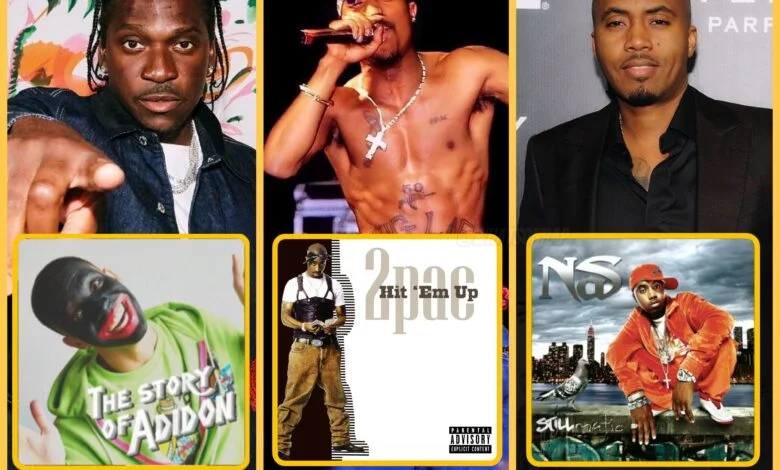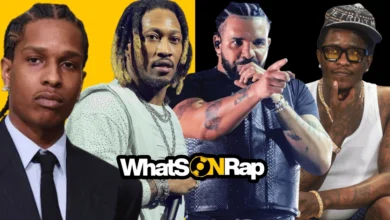What Does “Diss” Mean in Hip-Hop?

Hip-Hop Dissing Explained: History, Importance, and the Art of the Diss Track
In the world of hip-hop, the term “diss” is short for “disrespect.” It refers to a verbal attack or insult directed at another person, usually another rapper.
Diss tracks are songs specifically created to criticize, insult, or belittle someone, often leading to rap beef, a public feud between artists.
This article explores the history, origins, and significance of dissing in hip-hop, as well as the culture surrounding diss tracks and rap beefs.
History and Origins of Dissing in Hip-Hop
The practice of dissing in hip-hop dates back to the genre’s early days in the late 1970s and early 1980s.
Hip-hop originated in the South Bronx, New York City, where block parties and rap battles were common.
During these battles, MCs (Master of Ceremonies) would engage in lyrical sparring, showcasing their rhyming skills while putting down their opponents.
This competitive spirit laid the foundation for the diss culture. One of the earliest and most notable diss tracks is “The Bridge” by MC Shan, released in 1985.
The song praised Queensbridge, a neighborhood in Queens, New York.
In response, KRS-One of Boogie Down Productions released “South Bronx,” a track that challenged MC Shan’s claims and defended the Bronx as the birthplace of hip-hop.
This exchange marked the beginning of a long-standing rivalry between the two boroughs and set the stage for future diss tracks.
What Does It Mean to Make a Diss Track?
Creating a diss track involves crafting lyrics that directly or indirectly insult another person, typically a fellow rapper.
These tracks often highlight personal flaws, career shortcomings, or past controversies. A diss track serves multiple purposes:
- Showcase Skills: Demonstrates the rapper’s lyrical prowess and ability to craft clever, biting rhymes.
- Publicity: Generates buzz and attention, potentially boosting the artist’s visibility and sales.
- Settle Scores: Addresses personal or professional grievances publicly, often in response to a perceived slight or ongoing feud.
Why Are Diss Tracks So Popular?
Diss tracks hold a special place in hip-hop culture for several reasons:
- Entertainment: They offer fans a front-row seat to intense lyrical battles, akin to a verbal boxing match.
- Drama: The personal nature of diss tracks fuels intrigue and keeps listeners engaged in the unfolding saga.
- Skill Display: They provide a platform for artists to demonstrate their lyrical dexterity and wit, earning respect within the hip-hop community.
- Cultural Tradition: Dissing and battling are integral to hip-hop’s competitive roots, maintaining a sense of authenticity and tradition.
Notable Examples of Diss Tracks in Hip-Hop History:
Diss tracks have long been a staple of hip-hop, serving as powerful tools for artists to assert dominance, settle scores, and showcase their lyrical prowess.
Over the years, many diss tracks have become iconic, cementing themselves in hip-hop history for their impact and creativity.
Here’s a look at some of the most notable diss tracks that have defined and shaped the genre:
- 2Pac – Hit Em Up
- Nas – Ether
- Kendrick Lamar – Not Like Us
- Drake – Back-to-Back
- Jay Z – Takeover
- Pusha T – Story of Adidon
- Ice Cube – No Vaseline
- Common – The Bitch In Yoo
- Lauryn Hill – Lost Ones
- Future, Metro Boomin, Kendrick Lamar – Like That
What Is Rap Beef?
Rap beef refers to a prolonged, often public feud between two or more rappers.
These feuds typically involve a series of diss tracks, interviews, social media exchanges, and public statements.
Rap beef can arise from various sources, including:
- Personal Disputes: Conflicts over personal issues or relationships.
- Professional Rivalry: Competition for dominance in the hip-hop scene.
- Misunderstandings: Miscommunications or perceived slights that escalate into larger conflicts.
Notable rap beefs in history include the East Coast-West Coast rivalry between The Notorious B.I.G. and Tupac Shakur in the 1990s, and the feud between Jay-Z and Nas, highlighted by Nas’s “Ether” and Jay-Z’s “Takeover.”
Dissing and diss tracks are integral to hip-hop culture, reflecting the genre’s competitive and expressive nature.
From its origins in rap battles to modern-day feuds, dissing remains a powerful tool for artists to assert dominance, settle scores, and entertain fans.
While sometimes controversial, the art of the diss track continues to captivate audiences and shape the ever-evolving landscape of hip-hop.
FAQs About Diss Tracks and Rap Beef
Q: What was the first diss track in hip-hop?
A: One of the first notable diss tracks was “The Bridge” by MC Shan, which led to a response from KRS-One with “South Bronx.”
Q: Are diss tracks always negative?
A: While diss tracks are inherently critical, they are also a platform for rappers to showcase their lyrical talent and creativity.
Q: Can diss tracks end careers?
A: While diss tracks alone rarely end careers, a particularly impactful diss can damage an artist’s reputation. However, many rappers have bounced back from diss track feuds
Q: Are diss tracks scripted or spontaneous?
A: Diss tracks can be both. Some are premeditated responses to ongoing feuds, while others are spontaneous reactions to recent events.
Q: Have diss tracks ever led to violence?
A: Unfortunately, some rap beefs have escalated to physical violence, as seen in the tragic East Coast-West Coast rivalry that contributed to the deaths of Tupac Shakur and The Notorious B.I.G.
Q: Do female rappers engage in diss tracks and rap beef?
A: Yes, female rappers also participate in diss tracks and rap beefs. Notable examples include the feud between Nicki Minaj and Remy Ma.
